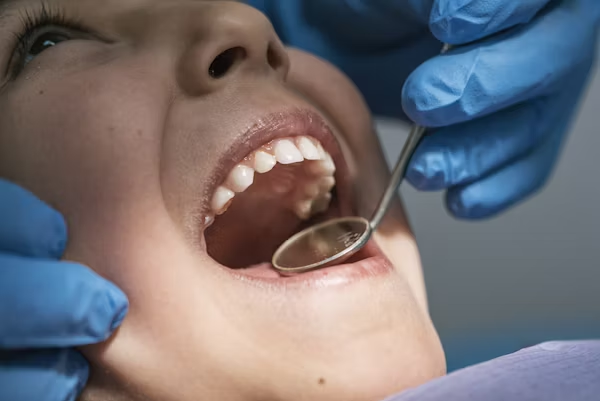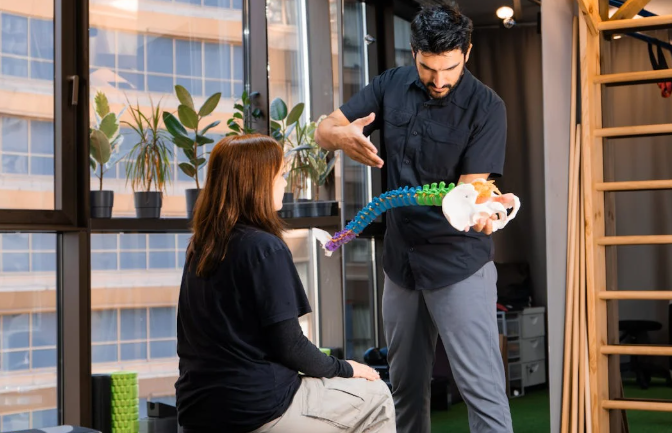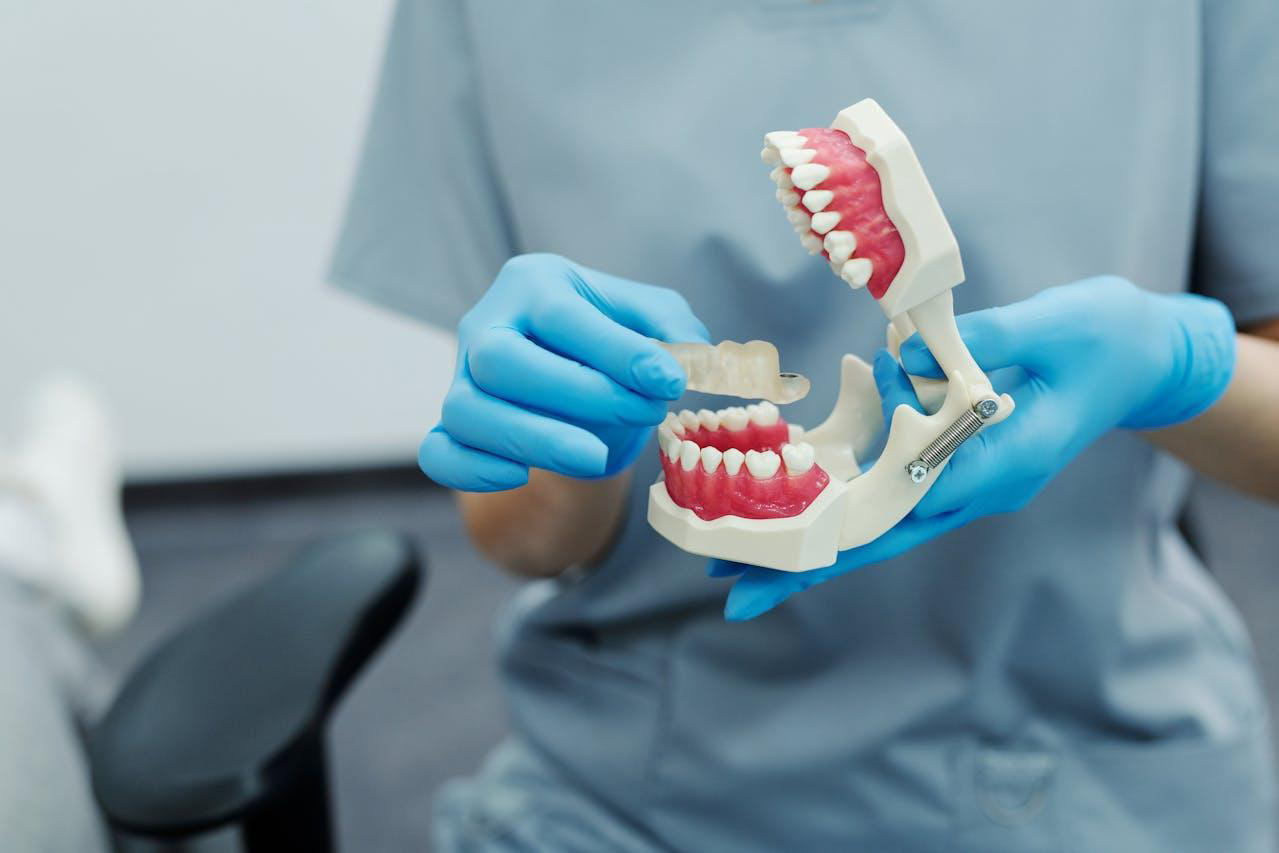Health & Fitness
FINAL – Staysure Dr Asimah_Eczema travel warning Final

I’m a doctor: here are my 8 top tips for travelling abroad with eczema
GP warns thousands of eczema sufferers about a mistake that could leave them stranded abroad with unexpected medical bills, and top tips to prevent excruciating flare-ups.
Approximately 1 in 10 UK adults and 1 in 5 children suffer from the most common form of eczema, known as Atopic Eczema, according to the National Eczema Society, and that doesn’t include all the other types of eczema.
This often lifelong and incurable medical condition can leave many isolated, especially during the summer months.
With potentially over 8.4 million UK residents travelling abroad in September alone, it can be a challenging month for those going on holiday who worry about excruciating flare-ups.
Many people are aware of the common culprits to avoid when treating eczema at home. However, Dr Asimah, a GP and medical expert at travel insurance provider Staysure, warns that there are numerous other health factors to consider as well.
Hot weather, sun exposure, saltwater, dietary changes, and travel stress can all trigger a flare-up and negatively affect your skin. “Eczema doesn’t take a break just because you do, and your dream trip might turn into a catastrophe with unexpected medical bills if you don’t take the proper precautions,” says Dr Asimah.
Dr Asimah is now warning Brits that failing to declare eczema to your travel insurer could invalidate your policy.
“Many eczema sufferers, while it is a constant struggle with flare-ups, tend to forget that eczema is still a pre-existing medical condition,” says Dr Asimah. “Therefore, it must be declared on your travel insurance policy to cover you if any emergencies happen abroad related to your condition. Even if you only use moisturiser or over-the-counter creams to manage eczema, it’s still important to declare!”
So, before you book that relaxing beach holiday or long-haul dream trip, here are the things you must do when travelling with eczema:
Build your ‘eczema kit’ and take it in your hand luggage
“The best defence against an eczema flare is being ready for one,” says Dr Asimah. “Bring a dedicated eczema kit with your medications, moisturisers, a light blanket (for insect protection without repellents), and cooling packs or cold towels.”
Declare your condition and treatments
“Even if you think it’s minor, declaring eczema and how you treat it when buying travel insurance can save you a fortune in the long run,” advises Dr Asimah. “That includes prescription creams, antihistamines, and even herbal remedies like evening primrose oil to manage symptoms. Patch test new products such as sunscreen specifically formulated for sensitive skin and those with eczema along with new toiletries before your trip – don’t wait until you’re abroad to try these products for the first time.”
A surprising number of people forget to declare conditions like eczema on their insurance, often because they don’t consider it “serious enough” to mention.
Be climate-conscious
New environments can trigger flares. “Dry air, humidity, heat, or cold, any of these could cause issues. Understand your triggers and bring more moisturiser than you’d normally use, especially if travelling abroad, where your usual brand may not be available.”
Prepare for the plane
Air travel can be particularly harsh on sensitive skin. Dr Asimah reveals, “Cabin air is drying, and you’re exposed to germs and allergens. Wipe down your seat area with unscented antibacterial wipes and carry some of your medication in your hand luggage, not just in case of luggage issues, but so you can maintain your usual routine.”
Call ahead to reduce allergy triggers
From feather pillows to scented cleaning products, hotels can conceal triggers that flare up allergies. “Request feather-free bedding, bring dust mite covers, and enquire about cleaning protocols. If staying with friends or family, inform them of your needs in advance.”
Avoid food triggers
If your eczema is related to food allergies, pack safe snacks and research restaurants before you travel. “Getting stuck somewhere with no safe options can be stressful, and stress can trigger a flare.”
Bring your documentation
If you need to carry large quantities of creams or liquids exceeding the 100ml travel limit, make sure you bring a copy of your prescription. This is also useful if you require early boarding or have specific medical needs during transit. Try to keep creams in the original packaging with the pharmacy label if possible.
Have a flare-up plan
“In severe cases, you might need emergency care, so having your treatment plan, written prescriptions, and all relevant medical information ready could make all the difference,” says Dr Asimah.
“The truth is, insurers need a complete picture of your health,” says Dr Asimah. “It’s not about making things difficult; it’s about protecting you with medical travel insurance. If you need treatment while away, your condition needs to be on your policy to ensure the medical costs will be covered.”
With hospital stays and medical treatment abroad potentially costing thousands of pounds, failing to declare eczema could transform a manageable skin condition into a financial catastrophe.
The National Eczema Society says: ‘Eczema is a complex medical condition and it’s important to plan ahead when travelling, says National Eczema Society. Sometimes the change in climate and environment when you’re away on holiday can trigger eczema flare-ups. Make sure you take your emollients and other treatments and pack in your suitcase, even if your skin is clear when you depart. National Eczema Society has lots of practical tips at www.eczema.org including factsheets to help you prepare for your holiday. It can feel like climbing a mountain just getting ready to go away, but it’s worth it as the rest, relaxation and change of environment can often be good for eczema!’
Health & Fitness
Knocked-Out Tooth or Cracked Crown? When to Call an Emergency Dentist

Dental drama never strikes at a convenient time. It’s almost always when you’re halfway through dinner, running late for work, or on holiday. Whether it’s a tooth flying out during a weekend football match or a crown suddenly snapping while you bite into crusty sourdough, one thing is certain: knowing when to call an emergency dentist can make the difference between saving your smile and facing bigger (and costlier) problems later.
The Tooth That Takes Flight
Let’s start with the most dramatic scenario—having a tooth completely knocked out. It’s the stuff of playground legends and sports injury horror stories. If this happens to you or your child, the golden rule is speed. A tooth has the best chance of being saved if it’s replanted within the hour. Pick it up by the crown (never the root), gently rinse it, and if possible, place it back in the socket. If that’s not realistic, slip it into a container of milk.
Then, call a 24 hours dental emergency clinic right away. Unlike regular check-ups, this is not the time to “wait and see.” Every minute counts.
Cracked, Chipped, or Crowned Chaos
Not all dental disasters involve missing teeth. Cracks and chips are more common—and can range from mildly annoying to downright painful. Sometimes, you’ll hear a telltale “crunch” while chewing hard candy, or worse, feel the jagged edge of a cracked crown against your tongue.
Here’s the tricky part: even if it doesn’t hurt, the damage may be deeper than it looks. A cracked crown can expose sensitive parts of the tooth, leaving it vulnerable to infection. Think of it like a broken phone screen—you can still swipe, but leave it too long, and suddenly nothing works.
The smart move? Book an emergency appointment to have it checked. Quick repairs can save you from needing a full root canal or replacement crown later.
Pain That Won’t Quit
Toothaches are often dismissed until they become unbearable, but lingering pain is your body waving a big red flag. Persistent throbbing or swelling can mean an infection is spreading below the surface. Without intervention, infections can move beyond the tooth into the jaw, face, and even bloodstream.
If over-the-counter painkillers don’t touch the ache, or if you notice swelling in your cheek or gums, don’t push through it. Emergency dentists aren’t just there for broken teeth—they’re also trained to stop severe pain in its tracks and prevent complications from escalating.
Lifestyle Interruptions: When Your Smile Gets in the Way
Emergencies don’t only mean medical risks; sometimes, they’re about life’s flow. Got a big presentation tomorrow? A date night? Or maybe you’re travelling and miles away from your usual dentist? Dental emergencies throw all of that into chaos.
That’s why having the number of an emergency clinic saved in your phone is a game-changer. Instead of spiralling into panic, you’ll know exactly who to call. A chipped front tooth before an interview doesn’t have to be the end of the world—if you move fast, it’s just another story you’ll laugh about later.
How to Know if It’s Urgent
Here’s a simple checklist:
- Knocked-out or loose tooth? Urgent.
- Severe toothache that won’t fade? Urgent.
- Swelling in your face or gums? Urgent.
- Cracked or broken crown? Urgent if painful or sharp; still worth calling in otherwise.
- Lost filling? Often uncomfortable but less urgent—though don’t ignore it for long.
When in doubt, assume it’s an emergency. It’s always better to get reassurance from a professional than risk long-term damage.
The Backup Plan Nobody Talks About
Sometimes, dental emergencies aren’t just dental. If you’ve had an accident involving other injuries—or you can’t get to a dentist immediately—it might be safer to visit a hospital for urgent care or the nearest emergency room. Emergency rooms can stabilise pain, manage bleeding, and ensure you’re fit for dental treatment afterwards.
Health & Fitness
The Hidden Role of the Spine in Whole-Body Wellness

Living in Amsterdam often means long hours on a bicycle, sitting in trams, or spending most of the day at a desk. While these routines are part of city life, they can also put pressure on your back and spine. Many people notice stiffness after a commute, tightness in their neck while working, or recurring discomfort that seems minor at first. What’s less obvious is how much the spine influences your overall health, far beyond aches and pains.
Your spine isn’t just a column of bones holding you upright. It’s central to how your body moves, how your nerves function, and even how much energy you feel each day. Yet, for many, spinal health only becomes a concern once pain sets in.
This article explores the hidden role of the spine in whole-body wellness, showing you why caring for it is key to living comfortably.
Why the Spine Matters More Than You Think
Most people see the spine as a structure that supports posture. While that’s true, the spine does much more. It houses and protects the spinal cord, which connects the brain to the rest of the body. Every signal that helps your muscles move, your organs function, or your reflexes react travels through this pathway. When the spine is well-aligned and supported, signals flow easily. When there’s tension, misalignment, or pressure, these signals can be disrupted.
This means a healthy spine is not only about preventing back pain. It’s about ensuring that your body can communicate effectively with itself. Without that smooth communication, daily activities—from walking to concentrating at work—become harder than they should be. This is why more people are beginning to see spinal care as part of whole-body wellness rather than a last resort when pain appears.
Clinics such as Chiropractic Connection emphasise this broader view by showing patients how spinal health influences energy, focus, flexibility, and overall function. Their approach highlights that the spine is not just a support system, but a foundation for nearly every aspect of daily life.
Posture and Its Hidden Health Costs
Posture is more than standing tall or looking confident. The way you sit, stand, and move affects several internal processes. Poor posture can reduce lung capacity, making it harder to breathe deeply. It can compress the digestive system, slowing down how food is processed. Circulation may also suffer when the body is cramped instead of open and upright.
Think about daily routines in Amsterdam: leaning over handlebars, sitting in trams with little legroom, or working on a laptop at home without proper desk support. These small habits accumulate over time, leading to subtle but noticeable health changes. By improving posture, you give your lungs, digestive organs, and circulatory system the space they need to function at their best.
How Spinal Health Impacts Movement and Flexibility
Flexibility and range of motion depend on more than stretching. The spine is central to how the body bends, twists, and moves. When the spine is aligned, movement feels natural and fluid. When there are restrictions, stiffness follows. This makes daily activities—from cycling across the city to lifting groceries—more difficult and sometimes painful.
Local residents often rely on active forms of transport and enjoy outdoor exercise. These habits are good for health, but they also place demands on the spine. Without proper care, misalignments can limit flexibility, increase the risk of strains, and make recovery from activity slower. Supporting spinal health allows the body to move more freely and adapt to these daily demands.
The Nervous System Connection You Should Know About
The spine is not only a framework of bones and joints—it is also the main protection for your spinal cord. This cord acts as the highway for signals between your brain and the rest of your body. Every movement, reflex, or organ function depends on these signals travelling smoothly.
When the spine is misaligned or under pressure, the nerves inside can become irritated. Even small interruptions may affect how signals are sent and received. This can lead to muscle tightness, slower reflexes, or discomfort in areas that do not seem directly linked to the spine. By keeping the spine healthy and aligned, you support clearer and more efficient communication throughout your entire body.
Everyday Habits That Quietly Strain Your Spine
Many people in Amsterdam are active and health-conscious, but even small daily routines can take a toll on the spine. Sitting for long hours at work or studying at a café without good back support creates pressure in the lower spine. Carrying a heavy backpack or shoulder bag while cycling can place uneven weight on the body, leading to imbalances.
Sleeping on a mattress that is either too soft or too firm can also strain the spine over time. Even spending long hours on a phone while bending the neck forward adds stress. These habits are so common that many do not notice the impact until discomfort develops. Becoming aware of them is the first step to protecting spinal health in the long run.
Warning Signs You Should Never Ignore
Back pain is not the only signal that something may be wrong with the spine. Other symptoms often appear first and are easy to dismiss. Frequent headaches, tightness in the neck and shoulders, or tingling in the arms or legs can all be linked to spinal issues. Reduced concentration or difficulty sitting for long periods may also suggest that the spine needs attention.
Ignoring these signs can allow small problems to grow into more serious conditions. The earlier these signals are recognised, the easier it is to restore balance and prevent complications. Paying attention to your body’s warnings is an important part of maintaining long-term wellness.
The spine is often overlooked until discomfort becomes noticeable, yet it is central to almost every part of daily health. From energy levels and flexibility to focus and mood, the spine plays a hidden role in how well the body functions. Ignoring it allows small problems to build up, while caring for it can improve quality of life in simple but powerful ways.
For people who want to enjoy cycling, working, and staying active without unnecessary discomfort, paying attention to spinal health is essential. With small changes at home, better habits during work, and the right professional support when needed, it is possible to live with greater energy, comfort, and balance every day.
Health & Fitness
What to Expect From a Complete Smile Overhaul

Ever avoided smiling in photos because you didn’t like how your teeth looked? Or caught yourself covering your mouth when you laugh? You’re not alone. More people are beginning to realise that a smile isn’t just about appearances. It shapes confidence, influences relationships, and even affects career opportunities. A smile that feels broken can make you pull back from everyday interactions.
That’s why complete smile overhauls are becoming more common. We live in an era where people invest in self-improvement across the board—from fitness apps to meditation subscriptions—so it makes sense to fix the thing everyone sees first. Dentistry has advanced in leaps, making it easier to transform a smile both functionally and cosmetically.
This isn’t about vanity. It’s about health, comfort, and feeling like yourself again. In this blog, we will share what happens during a full smile restoration, what goes into planning it, and how to prepare for the journey so you know exactly what to expect.
Knowing the Commitment
A complete smile overhaul isn’t a one-and-done situation. It’s a series of carefully planned steps designed to rebuild your teeth, bite, and oral health in a way that lasts. Some people imagine a single appointment followed by a dazzling reveal, but it’s more like renovating an old home—you need to fix the structure before adding the finishes.
The process usually starts with a thorough assessment. Dentists use X-rays, digital scans, and sometimes 3D imaging to see what’s really happening beneath the surface. After that, they’ll map out a personalised treatment plan. That might include crowns, implants, gum therapy, or even orthodontic adjustments, depending on what your mouth needs.
One of the most common questions people have is about the full mouth reconstruction cost. There’s no one-size-fits-all answer. The total cost depends on how much work needs doing, the materials used, and the level of precision required. Some people may only need a few crowns or bridges, while others require implants or bone grafts to rebuild their foundation first. A good dentist will take the time to walk you through each option—how it works, how long it lasts, and how it affects the bottom line. Many clinics even offer phased plans so you can manage the financial side gradually.
If you’re considering this kind of dental investment, ask for a breakdown up front. What’s included in the plan? How many visits will it take? Are there affordable alternatives that won’t compromise the outcome? Clear answers make the whole process much easier to navigate.
Getting Ready for the Process
Once you’ve signed off on the plan, your treatment begins with foundational work. This could mean treating infection, removing damaged teeth, or fixing issues with alignment. These early steps are critical—they create the stable base your future smile will rest on.
Next comes the restorative stage. This is where veneers, crowns, bridges, or implants come into play. Temporary versions are often placed first, so you can get used to the look and feel. Once everything fits just right and functions properly, your permanent restorations are custom-crafted and secured.
This part isn’t rushed for good reason. High-quality dental labs match the shade, shape, and feel of your real teeth with incredible accuracy. Before anything is finalised, your dentist will test the fit to make sure your new smile doesn’t just look right—it feels natural too.
Managing Expectations and Recovery
Expect to have multiple visits spread over a few months. Some appointments may leave your mouth tender, especially if you’re having extractions or implants. Plan on soft foods and downtime after those bigger procedures.
Stick to the aftercare instructions you’re given. Good hygiene is key to helping everything heal. Routine checkups will also help your dentist catch any small issues before they turn into big ones.
There’s also a mental shift involved. Seeing yourself with a new smile can feel a little strange at first. But most patients say that once they adjust, the confidence boost is more than worth it.
Why This Trend Keeps Growing
Smiles have become a kind of personal brand in the digital world. Whether it’s on Zoom or social media, our faces are front and centre more than ever. Combine that with longer life spans and major improvements in dental tech, and it makes sense why more people are choosing full smile restorations instead of short-term fixes.
Advanced technology has made results more predictable too. Many dentists now offer digital previews so you can see your expected outcome before any work starts. Today’s materials also last longer and look more natural than ever.
Making It Last
After all the work is done, protecting your investment is the priority. That means daily brushing, flossing, and not skipping your cleanings. If you grind your teeth, your dentist may recommend a nightguard to prevent damage.
Your eating habits matter too. Cut back on sticky or overly hard foods that can wear down your restorations. Try to avoid snacking all day, especially on sweets, which can affect both the restorations and your natural teeth.
It’s like buying a quality car. It’ll last a long time, but only if you look after it.
Seeing the Results Take Shape
One of the most rewarding parts of the process is watching the transformation unfold in real time. It doesn’t happen overnight, but the small milestones along the way can be surprisingly motivating. The first time you see your temporary restorations, even before the final polish, you’ll start to imagine what’s possible. You might catch yourself smiling more, even if the full result is still weeks away.
This stage is about more than teeth. It’s about rediscovering how you carry yourself. You speak a little more clearly. You stop covering your mouth when you laugh. Even chewing your food feels more comfortable and balanced.
These early wins keep momentum going. And they help remind you why you started the process in the first place. It’s not just a cosmetic fix—it’s a functional upgrade that changes how you interact with the world. When your bite feels right and your smile looks natural, your whole face relaxes. That’s when the results shift from noticeable to life-changing.
All in all, a full smile restoration isn’t just about aesthetics. Patients often report feeling more comfortable speaking, eating, and socialising. It changes how they show up in the world.
Yes, it takes time. Yes, it requires planning and financial commitment. But the result is a smile that feels like it’s always belonged to you.

 Blog9 months ago
Blog9 months agoHow to Deal with Scabies While Traveling

 Travel8 months ago
Travel8 months agoRichmond, Virginia Street Art Guide

 Travel8 months ago
Travel8 months agoPerhentian Islands: How to Get There, What to Expect, & More

 Travel8 months ago
Travel8 months agoHow to Live in Your Car in New Zealand

 Travel8 months ago
Travel8 months agoVegan Guide to Dining Out in Richmond, Virginia

 Travel8 months ago
Travel8 months agoSouvenir in Nepal: A Guide to Unique Handicrafts and Cultural Treasures

 Food8 months ago
Food8 months agoVegetarian Food Nepal: A Journey into Flavorful Plant-Based Cuisine

 Travel5 months ago
Travel5 months agoA Local’s Guide to Sanibel Island, Florida















